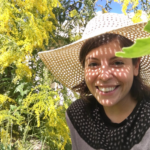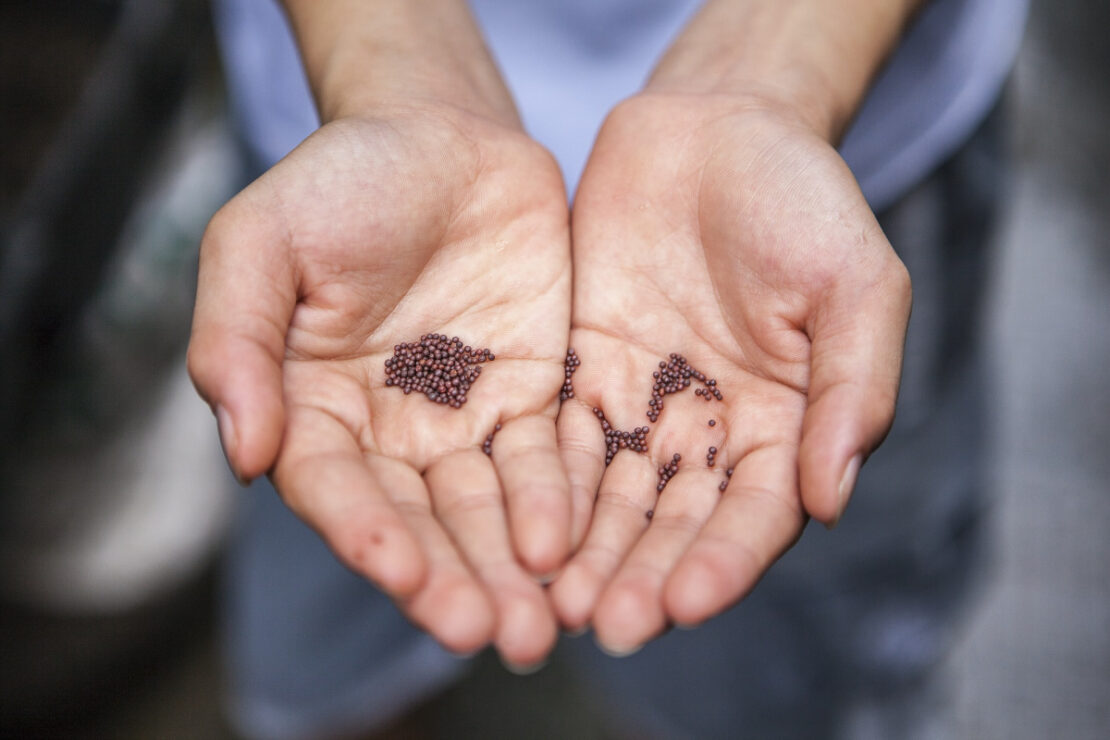
Seed Scarification: What Herb Gardeners Need to Know
Seeds are packaged by nature to survive the elements. A tough outer shell protects the tender plant embryo inside. Some seed coatings are tougher than others. Seeds with the toughest coatings can be hard to crack, which is why they germinate at much higher rates when exposed to conditions like fire, freezing, or digestive processes (for example, being eaten by a bird). To imitate these conditions for cultivation, gardeners can scarify seeds through a method called seed scarification.
How to Scarify Seeds
The goal of scarification is to wear down the tough outer shell of the seed, so that water is able to reach the inside. The introduction of water to a seed is the catalyst that restarts metabolic and respiratory functions. Both functions fuel the growth of the embryo, and the emergence of the seedling (Bewley, 1997).
Growing a plant is one of the best ways to be in relationship with the herbal allies we use. Understanding and providing what a plant needs will build reciprocity in your relationship, and it can begin in the earliest stages of germination.
There are several different ways to scarify seeds. Let’s take a look at a few different methods of seed scarification and when we might use them.
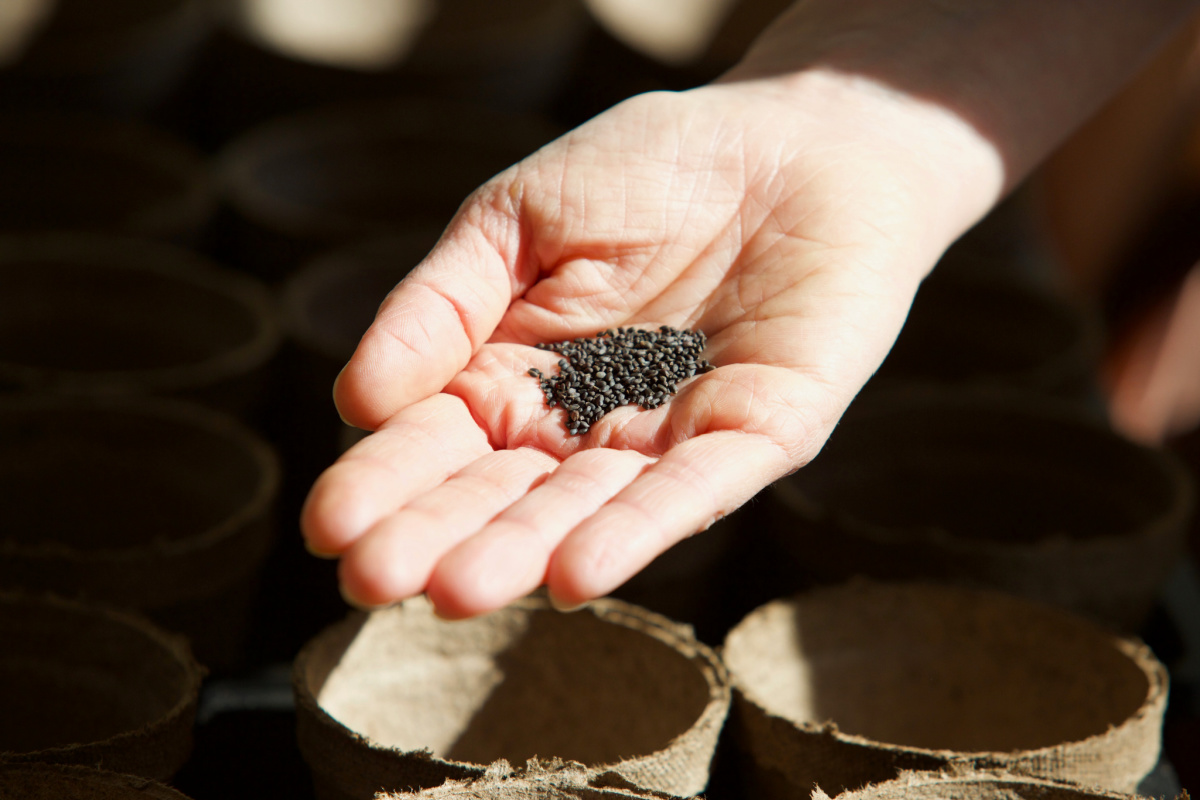
Heat Seed Scarification
One way to scarify seed is to heat it up, with either moist or dry heat. This breaks down the hard outer shell of the seed and allows water to permeate the seed coating. The trick here is to know how hot the seeds need to be for what period of time. You want to break down the outer shell without damaging the embryo inside.
The amount and duration of heat required to damage the seeds’ hard outer shell can vary from species to species, even within the same genus. Before you heat scarify seeds for germination be sure that the particular species is adapted for scarification by heat! Alfalfa is one such species that may benefit from heat scarification. Studies show the significant impact that dry heat has on the germination rate of alfalfa (Medicago sativa) seed. One study found that the desired degree of denaturing to the seed coat can be achieved by placing the seeds in a 400 degree Fahrenheit oven for four minutes (Kimura & Islam, 2012).
On the other hand, seeds of shatavari (Asparagus racemosus) benefit from hot moist scarification. A hot water bath is used to achieve the desired conditions for this process. In the case of shatavari, one hour in 160-degree Fahrenheit water can improve germination rates by nearly 50 percent (Tiwari & Dubey, 2017).
These hot temperatures may seem unnatural, but may serve to speed or simulate the process of prolonged exposure to the hot sun, and humidity, or alternating sun and precipitation, for hot moist scarification or may simulate prolonged sun exposure or fire, for hot dry scarification. Be sure to investigate what type of conditions the seed you want to work with is adapted for. There is likely agricultural research, traditional observations, or both, which can inform your seed work!
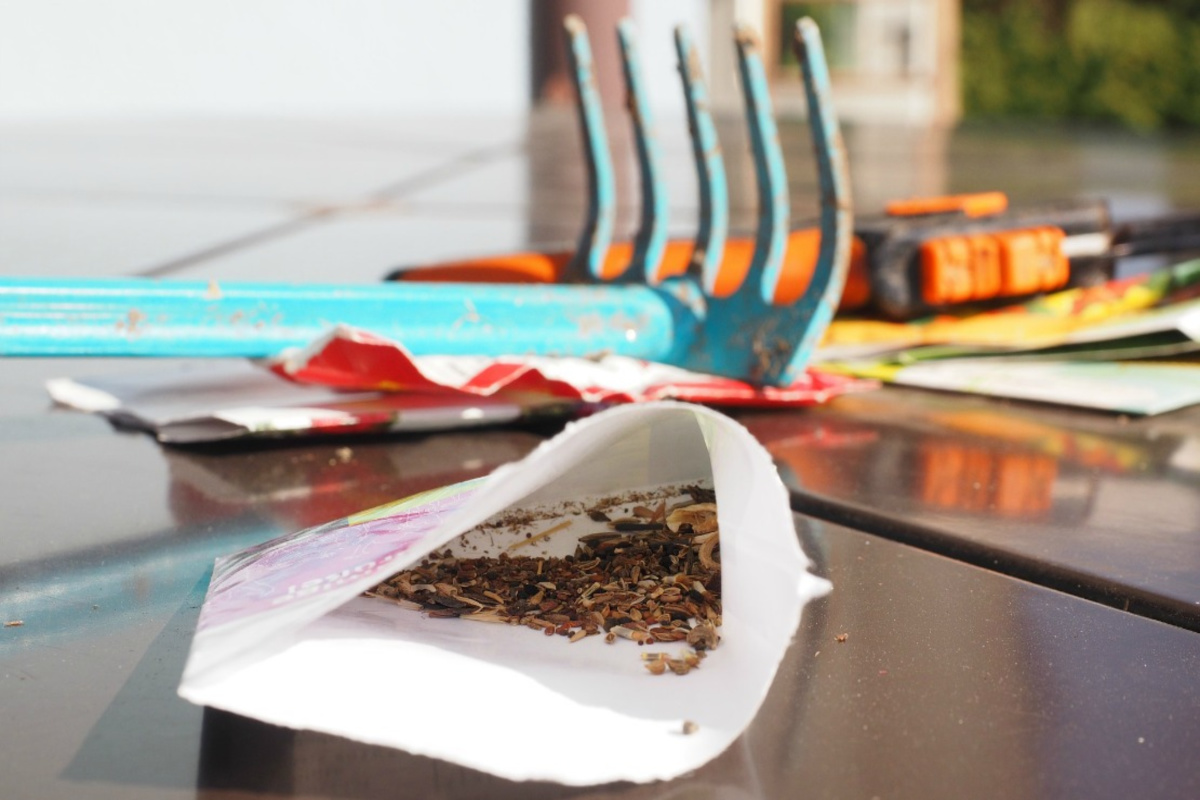
Mechanical Seed Scarification
Mechanical scarification is another method of breaking down the seed coating. One of the more popular and easily accessible ways to do this is by rubbing seeds between two sheets of medium-grit sandpaper. Remember that the goal here is to encourage germination by softening, or creating small abrasions in the hard outer shell, but not pulverizing it.
Herbalist and author Richo Cech suggests this method when planting astragalus (Astragalus mongholicus) seeds (Strictly Medicinals, n.d.). You might also know this herb as Astragalus membranaceous or milkvetch, and the seed may be listed as any of these.
This method is also effective for red clover (Trifolium pratense), nasturtium (Trapoleum spp.), and senna (Cassia angustifolia) seeds (Amanda, n.d.; Kimura & Islam, 2012; Tiwari & Dubey, 2017). The seeds of the astragalus, senna, and nasturtium also do well with a pre-planting soak after the mechanical scarification, which further softens the seeds’ hard exterior and makes it easier for the seedlings to emerge (Amanda, n.d.: Strictly Medicinals, n.d.; Tiwari & Dubey, 2017).
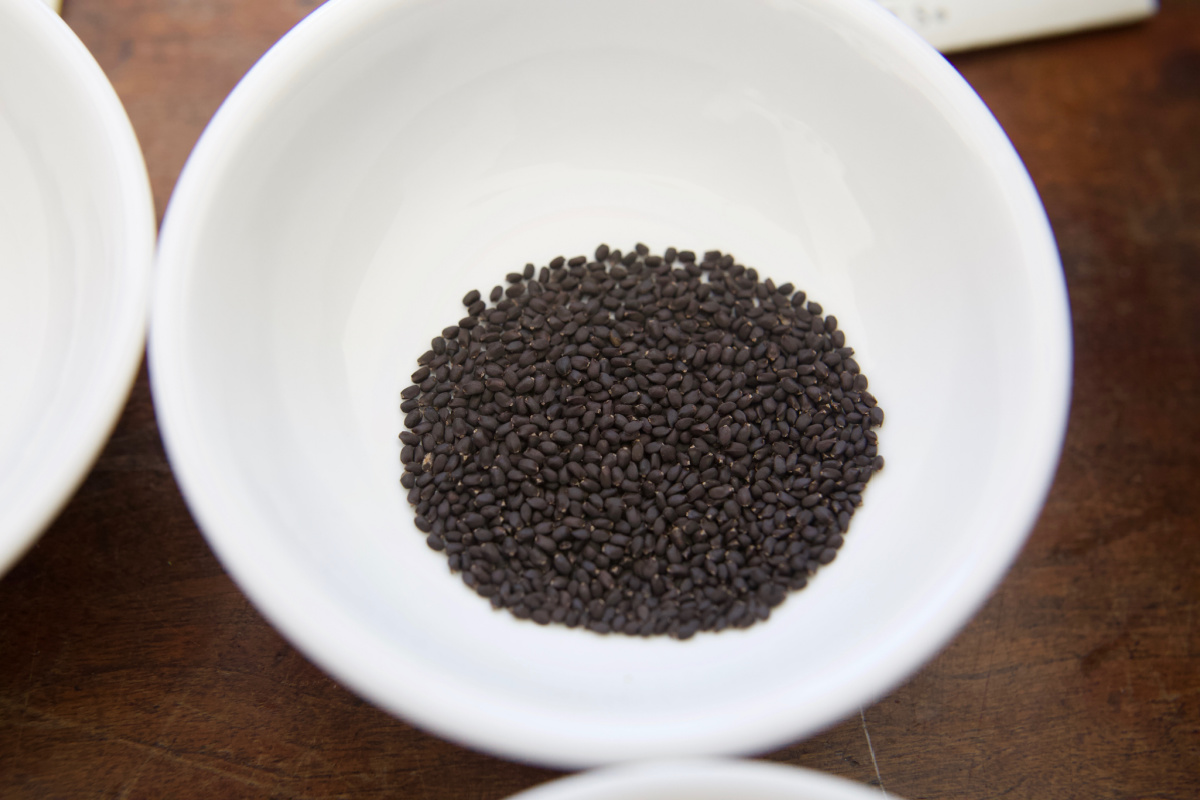
Chemical Seed Scarification
Scarifying seeds with chemicals is another method of breaking dormancy that is studied quite a bit. Sulfuric acid is the chemical most often used in studies that have examined this method. This type of scarification improves the germination rate of fenugreek (Trigonella corniculata) and tamarind (Tamarindus indica) among others (Kimura & Islam, 2012).
While this has shown to be effective for a multitude of seeds, it’s not very likely that a backyard gardener would be able to get their hands on the sulfuric acid used by scientists for these studies. It is possible to soak seeds in white vinegar, which contains acetic acid. Vinegar is safer and easier to come by than sulfuric acid, but not as effective (Evans & Blazich, 1999).
The length of time to soak seeds will vary. Since vinegar is not as caustic as sulfuric acid, seeds can soak for several hours or overnight, and no longer than 24 hours. Seeds, like every living thing, need to breathe. If you leave them submerged for too long the seeds will suffocate and begin to deteriorate.
Seed Scarification Chart
| Plant Name | Heat Scarification | Mechanical Scarification | Chemical Scarification |
| Alfalfa (Medicago sativa) | X (dry) | ||
| Marshmallow (Althea officinalis) | X | ||
| Catnip (Nepeta cataria) | X | ||
| Chaste tree (Vitex agnus-castus) | X | ||
| Fenugreek (Trigonella foenum-graecum) | X | ||
| Horehound (Marrubium vulgare) | X | ||
| Hyssop (Hyssopus officinalis) | X | ||
| Licorice (Glycyrrhiza glabra) | X | ||
| Lemon balm (Melissa officinalis) | X | ||
| Astragalus (Astragalus mongholicus) | X | ||
| Nasturtium (Tropaeolum spp.) | X | ||
| Red Clover (Trifolium pratense) | X | ||
| Sea Buckthorn (Hippophae rhamnoides) | X | ||
| Senna (Cassia angustifolia) | X | ||
| Shatavari (Asparagus racemosus) | X (moist) | ||
| Spikenard (Aralia racemosa) | X | ||
| Tamarind (Tamarindus indica) | X | ||
| Uva ursi (Arctostaphylos uva-ursi) | X | ||
| Violet (Violet odorata) | X |
(Table compiled from Amanda, n.d.; Barekat et al., 2013; Heirloom Organics, n.d.; Kimura & Islam, 2012; Strictly Medicinals, n.d.a-f; Tiwari & Dubey, 2017;)
In Conclusion,
Seeds are well designed to survive the myriad of conditions Mother Nature puts them through before they sprout so that the delicate baby plant, called the embryo, inside remains safe from the perils of the journey. Seeds are so adept at surviving these conditions that they come to depend on them, whether those conditions consist of fire, abrasion, or corrosion. Learning a bit about the conditions a seedling needs to come out of its shell will increase germination rates and help boost a garden’s potential.
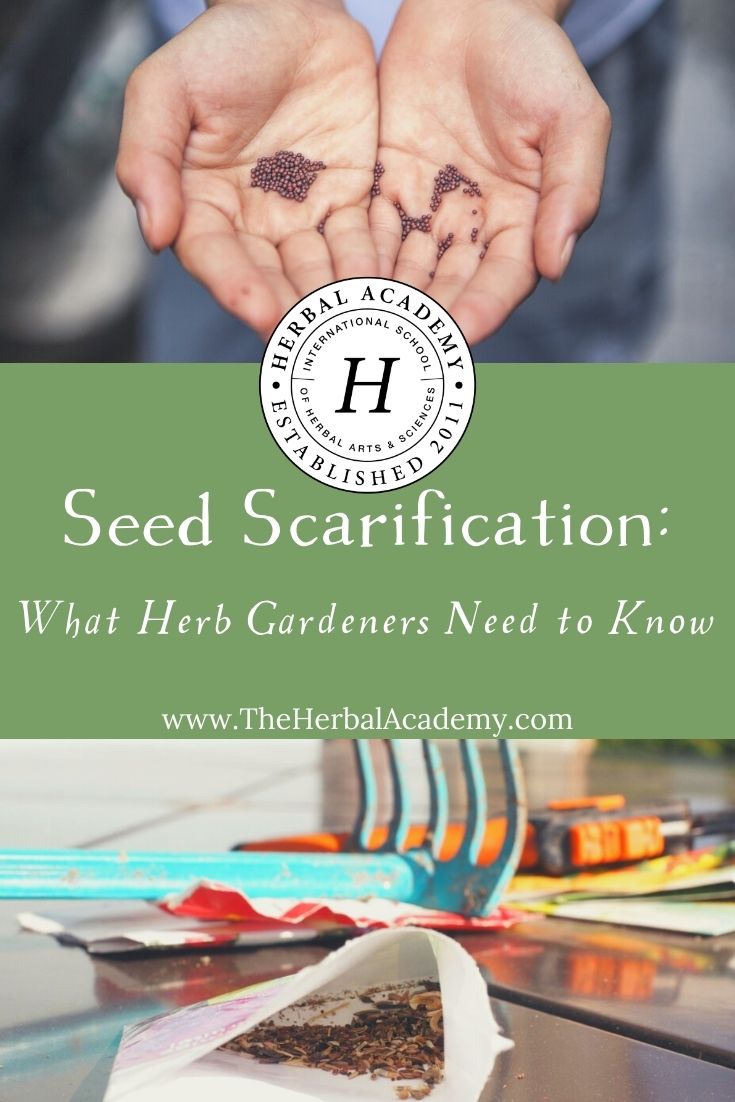
REFERENCES
Amanda. (n.d.). How to scarify seeds for spring planting [Blog]. Retrieved from https://www.americanmeadows.com/blog/2017/06/05/how-to-scarify-and-soak-seeds-for-spring-planting
Barekat, T., Otroshy, M., Samsam-Zadeh, B., Sadr-arhaml, A., & Mokhtari, A. (2013). A novel approach for breaking seed dormancy and germination in Viola odorata (a medicinal plant). Journal of Novel Applied Sciences, 2(10), 513-516. http://jnasci.org/wp-content/uploads/2013/10/513-516.pdf
Bewley, J. D. (1997). Seed germination and dormancy. The plant cell, 9, 1055-1066. https://www.ncbi.nlm.nih.gov/pmc/articles/PMC156979/pdf/091055.pdf
Evans, E. & Blazich, F. (1999). Overcoming seed dormancy: Trees and shrubs [Leaflet]. North Carolina State Extension. Retrieved from https://content.ces.ncsu.edu/overcoming-seed-dormancy-trees-and-shrubs
Heirloom Organics. (n.d.). How to grow spikenard | Guide to growing spikenard [Database]. Retrieved from http://www.heirloom-organics.com/guide/va/guidetogrowingspikenard.html
Kimura, E., & Islam, M.A. (2012). Seed scarification methods and their use in forage legumes. Research Journal of Seed Science, 5(2), 38-50. https://www.researchgate.net/publication/274562991_Seed_Scarification_Methods_and_their_Use_in_Forage_Legumes
Strictly Medicinals. (n.d.a.). Astragalus (Astragalus membranaceus) seeds, organic [Shop]. Retrieved from https://strictlymedicinalseeds.com/product/astragalus-astragalus-membranaceus-packet-of-50-seeds-organic/#:~:text=Scarify%20seed%20lightly%20on%20medium,in%203%20to%2010%20days
Strictly Medicinals. (n.d.b.) Chaste tree (Vitex agnus-castus) seeds, organic [Shop]. Retrieved from https://strictlymedicinalseeds.com/product/chaste-tree-official-vitex-agnus-castus-packet-of-100-seeds-organic/
Strictly Medicinals. (n.d.c.) Horehound, white (Marrubium vulgare), packet of 100 seeds, organic [Shop]. Retrieved from https://strictlymedicinalseeds.com/product/horehound-white-marrubium-vulgare-packet-of-100-seeds-organic/
Strictly Medicinals. (n.d.d.) Hyssop, official (Hyssopus officinalis) seeds, organic [Shop]. Retrieved from https://strictlymedicinalseeds.com/product/hyssop-official-hyssopus-officinalis-packet-of-100-seeds-organic/
Strictly Medicinals. (n.d.e.) Licorice, official (Glycyrrhiza glabra) seeds [Shop]. Retrieved from https://strictlymedicinalseeds.com/product/licorice-official-glycyrrhiza-glabra-seeds/
Strictly Medicinals. (n.d.f.) Marshmallow (Althea officinalis) seeds, organic [Shop]. Retrieved from https://strictlymedicinalseeds.com/product/marshmallow-althaea-officinalis-packet-of-100-seeds-organic/
Tiwari, R.K.S., & Dubey, S. (2017). Seed germination improvement in three important medicinal plant species Abelmoschus moschatus (Medik), Asparagus racemosus (Willd), and Cassia angustifolia (Linn). Journal of Medicinal Plant Studies, (5)2, 243-248. https://www.plantsjournal.com/archives/2017/vol5issue2/PartD/5-2-2-763.pdf

